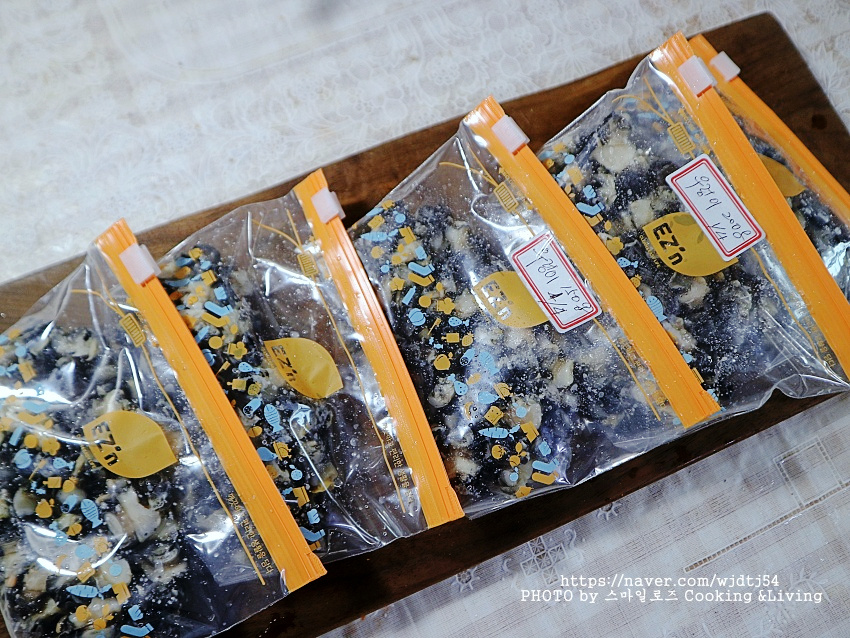Fresh River Snails: Preparation and Storage Guide
Excellent for Bone Health: A Complete Guide to Cleaning and Storing Fresh River Snails

Do you enjoy the chewy and savory taste of river snails? They are delicious in doenjang-jjigae (soybean paste stew) and fantastic in summer gangdoenjang (spicy soybean paste dip) served with ssam (lettuce wraps)! Today, I’ll guide you through the entire process of thoroughly cleaning fresh river snails, portioning them for convenience, and storing them perfectly. #RiverSnailPrep #SnailCleaning #SnailBenefits #SnailPortioning #SnailStorage
Essential Ingredients- 1kg fresh river snails
- 3 Tbsp flour
- 3 Tbsp vinegar
Cooking Instructions
Step 1
If using frozen river snails, let them thaw slightly before proceeding. Pour the snails into a bowl.

Step 2
Cover the snails with water and generously add 3 tablespoons of flour. Then, gently but firmly rub and agitate the snails (called ‘barak-barak’ in Korean) to clean them thoroughly without damaging them.

Step 3
You’ll notice that as you wash with flour, the snails will release a dark, murky liquid. This indicates the flour is effectively absorbing the mud and impurities attached to them. Rinse them under running water multiple times until the water runs clear.

Step 4
Here’s my special tip: After rinsing, place the clean snails back in water and add 2-3 tablespoons of vinegar. Let them soak for about 5 to 10 minutes. The vinegar will help firm up the snail meat, making it delightfully chewy, and also eliminate any lingering fishy odors.

Step 5
Drain the snails from the vinegar water using a colander. Ensure most of the water is removed. Proper draining is key to preventing excess liquid during cooking.

Step 6
Look at them! Perfectly plump and clean river snails. Seeing them prepared this well already makes me excited to start cooking!

Step 7
Prepare resealable freezer bags for portioning. Having various sizes on hand makes it convenient to grab the right amount for different dishes.

Step 8
Divide the cleaned snails into portions of 150g and 200g into the freezer bags. This way, you can easily select the appropriate quantity based on your recipe or serving size.

Step 9
These portioned snails can be stored in the freezer and used in dishes like doenjang-jjigae, ssam-bap with snails, or gangdoenjang. I can’t wait for my wrist to heal so I can make some delicious gangdoenjang and enjoy it with barley rice and ssam!

Step 10
An important tip for freezing river snails: Freezing just the snail meat can make it tough upon thawing. To maintain a tender texture, freeze the snail meat along with a small amount of water.

Step 11
Chewy and savory river snails are also known as ‘Jeonra’ (田螺) and ‘Toro’ (土螺) in Chinese characters. They are packed with nutrients including Vitamin A, B vitamins, Vitamin C, iron, calcium, taurine, betaine, protein, niacin, retinol, beta-carotene, dietary fiber, and phosphorus. River snails are particularly beneficial for preventing osteoporosis and anemia, improving edema, promoting healthy skin, and supporting liver health. Their low fat and high protein content make them excellent for dieting. Furthermore, their low calorie count and balanced mineral composition contribute positively to healthy weight management.




